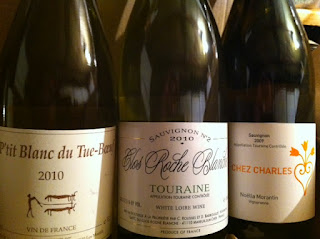I recently read an article about Lauren Hutton. Unbelievably, she was told to fix her gapped-teeth if she wanted a career in modelling. I just read in New York Times T-Magazine about Lana Del Rey. Some criticize her looks because her lips are too voluptuous. The recent T-Magazine also mentioned about Willem Dafoe, who was also seen in not-so-positive light about his rough face. Well, to me, Lauren’s teeth, Lana’s lips and Willem’s face are beauty in truth. Doubt the conventional. Experience the exceptional.
I used to love Sauvignon Blanc from all places. Then about ten years ago, I stopped drinking the varietal. They started to taste just about the same. “This bottle is text-book Sauvignon Blanc” is the phrase I often heard. When someone tells me a wine is textbook varietal, the wine should remain in textbooks.
Where is my Lauren’s gap-teeth in this bottle of Sauvignon Blanc? And who surgically thinned my Lana’s lips in my Sauvignon? And who smoothed out Willem’s rough face in this bottle of Sauvignon? Damn it!
I rediscovered the beauty in truth in Sauvignon Blanc (the French simply call it Sauvignon) when I visited, tasted and learned from Clos Roche Blanche, Noëlla Morantin, and Thierry Puzelat.
Sauvignons from Thierry Puzelat (Le Clos du Tue Boeuf), Clos Roche Blanche and Noëlla Morantin
“The wine is in true expression now than when it was first released”, spoke softly Didier of Clos Roche Blanche. He was referring to the 2010 Sauvignon No. 2 as we tasted the various wines in the cellar during my January 2012 trip. Clos Roche Blanche Sauvignon No. 2 is so singular. When tasted out of a barrel, the Sauvignon No. 2 is so energetic that I fear the wine is going to shatter the glass that I am holding. The wine is like sucking mineral through a straw with a fruit that reminds of grapefruit. After about a year in bottle, the wine transforms not dissimilar to Chenin Blanc but not quite. The fruit recalls quince. The minerality remains.
When I visited Noëlla Morantin, a marquee Sauvignon vigneronne, she had two different Sauvignons in the barrels/demi-muids. Hers are released later when the youth of Sauvignons settles down to quince and minerality reflections. Her Sauvignon ages gracefully. Thierry Puzelat also makes Sauvignon wines and his is often blended with a portion of Menu Pineau and Fie Gris. His Sauvignon based wines are full of energy and nervous tension. “Le P’Tit Blanc tastes better the next day after the bottle has been opened”, a local merchant told me recently. And that sums up the freshness and energy in the Thierry Puzelat’s Sauvignon.
The majority of Sauvignon Blanc on the market today does not go through malolactic fermentation. Since the majority of vineyards are industrially farmed and mechanically harvested (about 95% according to Art of Eating, September 2010 issue). This mechanical harvest results in grapes to bleed before they arrive at the winery. So, to prevent the bacterial spoilage, the juice is dosed with sulphur. It kills the bacteria, which is required for the malolactic fermentation. Thus by a default, the malolactic is prevented. There are, of course, vignerons who cultivate organically and harvest by hand but intentionally block malolactic fermentation to achieve a certain style.
Clos Roche Blanche, Noëlla Morantin and Thierry Puzelat all let their Sauvignon go through malolactic fermentation. “By nature, the Sauvignon wants to go through malo”, was a recurring theme when I visited them. Clos Roche Blanche, Noëlla Morantin and Thierry Puzelat are making singular Sauvignons – all expressions of beauty in truth. Doubt the conventional. Drink the exceptional.

